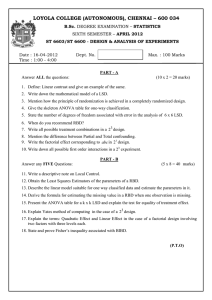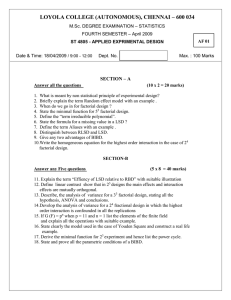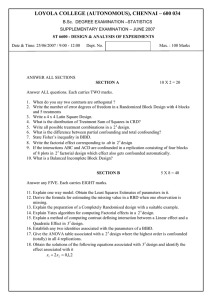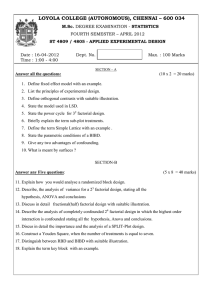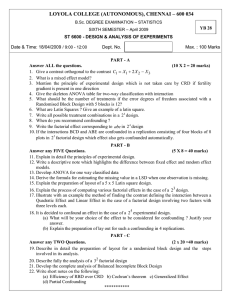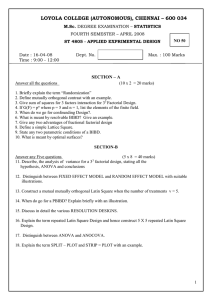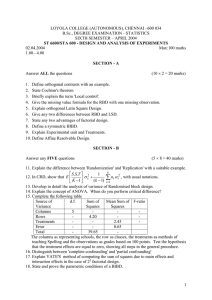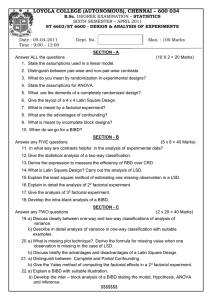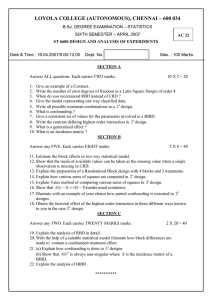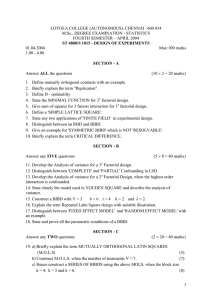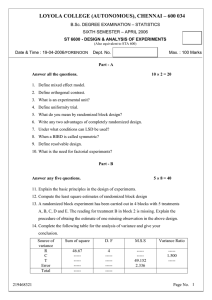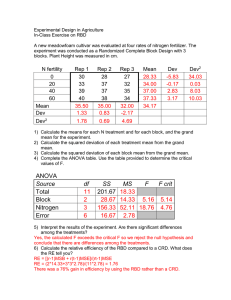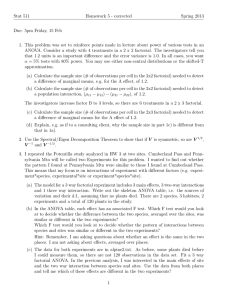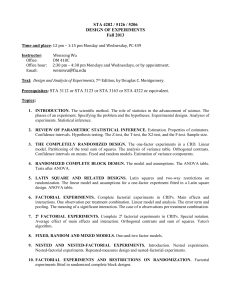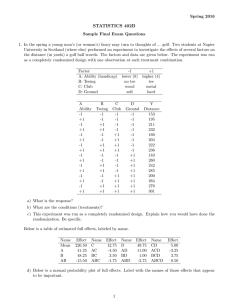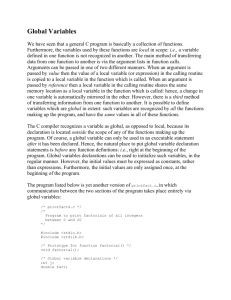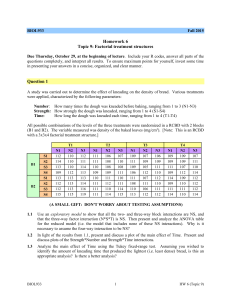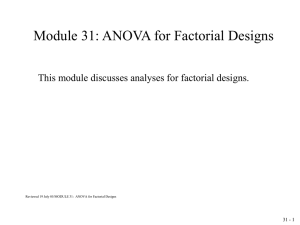ST 4809 - Loyola College
advertisement
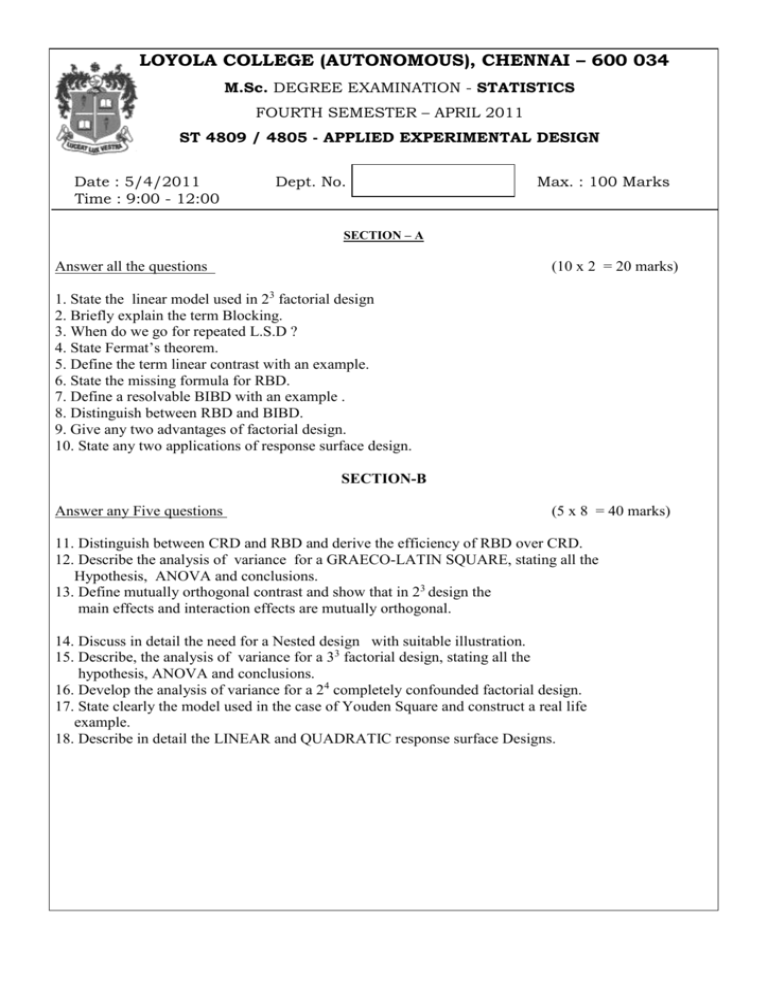
LOYOLA COLLEGE (AUTONOMOUS), CHENNAI – 600 034 M.Sc. DEGREE EXAMINATION - STATISTICS FOURTH SEMESTER – APRIL 2011 ST 4809 / 4805 - APPLIED EXPERIMENTAL DESIGN Date : 5/4/2011 Time : 9:00 - 12:00 Dept. No. Max. : 100 Marks SECTION – A Answer all the questions (10 x 2 = 20 marks) 1. State the linear model used in 23 factorial design 2. Briefly explain the term Blocking. 3. When do we go for repeated L.S.D ? 4. State Fermat’s theorem. 5. Define the term linear contrast with an example. 6. State the missing formula for RBD. 7. Define a resolvable BIBD with an example . 8. Distinguish between RBD and BIBD. 9. Give any two advantages of factorial design. 10. State any two applications of response surface design. SECTION-B Answer any Five questions (5 x 8 = 40 marks) 11. Distinguish between CRD and RBD and derive the efficiency of RBD over CRD. 12. Describe the analysis of variance for a GRAECO-LATIN SQUARE, stating all the Hypothesis, ANOVA and conclusions. 13. Define mutually orthogonal contrast and show that in 23 design the main effects and interaction effects are mutually orthogonal. 14. Discuss in detail the need for a Nested design with suitable illustration. 15. Describe, the analysis of variance for a 33 factorial design, stating all the hypothesis, ANOVA and conclusions. 16. Develop the analysis of variance for a 24 completely confounded factorial design. 17. State clearly the model used in the case of Youden Square and construct a real life example. 18. Describe in detail the LINEAR and QUADRATIC response surface Designs. SECTION-C Answer any Two questions (2 x 20 = 40 marks) 19. Discuss in detail the real life scenario of application of experimental designs in i) Agriculture ii) Industry iii) Health sciences. ( 6+7+7 marks) 20.a) Define the term key BLOCK in the case of 25 factorial design of size 23 in which 2 independent interactions and 1 generalized interaction are Confounded Discuss in detail using the required linear equations for the confounded effects. b) State and prove any one of the parametric conditions of a BIBD (15 +5-Marks) 21 a) When do we go for PBIBD? b) Construct a PBIBD with 2 associate classes stating all the parametric conditions c) Explain the m-ple Lattice Square design and hence construct lattice square design when the block size k=3. (2+8+10-Marks) 22 Write short notes on the following a) Replication b) MOLS c) Partial Confounding d) Split plot (5+5+5+5-Marks) *****
